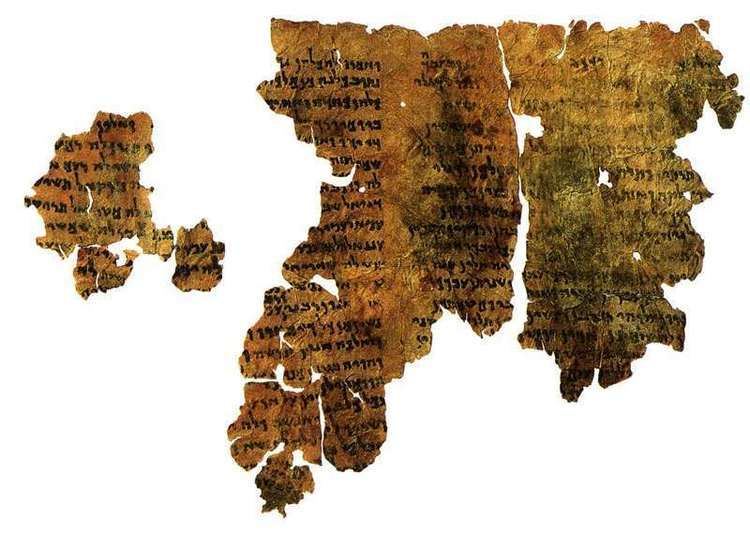 | ||
Academic study of Jewish mysticism, especially since Gershom Scholem's Major Trends in Jewish Mysticism (1941), distinguishes between different forms of mysticism across different eras of Jewish history. Of these, Kabbalah, which emerged in 12th-century Europe, is the most well known, but not the only typologic form, or the earliest to emerge. Among previous forms were Merkabah mysticism (c. 100 BCE – 1000 CE), and Chassidei Ashkenaz (early 13th century CE) around the time of Kabbalistic emergence.
Kabbalah means "received tradition", a term previously used in other Judaic contexts, but which the Medieval Kabbalists adopted for their own doctrine to express the belief that they were not innovating, but merely revealing the ancient hidden esoteric tradition of the Torah. This issue is crystallised until today by alternative views on the origin of the Zohar, the main text of Kabbalah. Traditional Kabbalists regard it as originating in Tannaic times, redacting the Oral Torah, so do not make a sharp distinction between Kabbalah and early Rabbinic Jewish mysticism. Academic scholars regard it as a synthesis from Medieval times, but assimilating and incorporating into itself earlier forms of Jewish mystical tradition, as well as other philosophical elements.
The theosophical aspect of Kabbalah itself developed through two historical forms: "Medieval/Classic/Zoharic Kabbalah" (c.1175 – 1492 – 1570), and Lurianic Kabbalah (1569 CE – today) which assimilated Medieval Kabbalah into its wider system and became the basis for modern Jewish Kabbalah. After Luria, two new mystical forms popularised Kabbalah in Judaism: antinomian-heretical Sabbatean movements (1666 – 18th century CE), and Hasidic Judaism (1734 CE – today). In contemporary Judaism, the only main forms of Jewish mysticism followed are esoteric Lurianic Kabbalah and its later commentaries, the variety of schools in Hasidic Judaism, and Neo-Hasidism (incorporating Neo-Kabbalah) in non-Orthodox Jewish denominations.
Two non-Jewish syncretic traditions also popularised Judaic Kabbalah through its incorporation as part of general Western esoteric culture from the Renaissance onwards: theological Christian Cabala (c. 15th – 18th century) which adapted Judaic Kabbalistic doctrine to Christian belief, and its diverging occultist offshoot Hermetic Qabalah (c. 15th century – today) which became a main element in esoteric and magical societies and teachings. As separate traditions of development outside Judaism, drawing from, syncretically adapting, and different in nature and aims from Judaic mysticism, they are not listed on this page.
Three aims in Jewish mysticism
The Kabbalistic form of Jewish mysticism itself divides into three general streams: the Theosophical/Speculative Kabbalah (seeking to understand and describe the divine realm), the Meditative/Ecstatic Kabbalah (seeking to achieve a mystical union with God), and the Practical/Magical Kabbalah (seeking to theurgically alter the divine realms and the World). These three different, but inter-relating, methods or aims of mystical involvement are also found throughout the other pre-Kabbalistic and post-Kabbalistic stages in Jewish mystical development, as three general typologies. As in Kabbalah, the same text can contain aspects of all three approaches, though the three streams often distill into three separate literatures under the influence of particular exponents or eras.
Within Kabbalah, the theosophical tradition is distinguished from many forms of mysticism in other religions by its doctrinal form as a mystical "philosophy" of Gnosis esoteric knowledge. Instead, the tradition of Meditative Kabbalah has similarity of aim, if not form, with usual traditions of general mysticism; to unite the individual intuitively with God. The tradition of theurgic Practical Kabbalah in Judaism, censored and restricted by mainstream Jewish Kabbalists, has similarities with non-Jewish Hermetic Qabalah magical Western Esotericism. However, as understood by Jewish Kabbalists, it is censored and forgotten in contemporary times because without the requisite purity and holy motive, it would degenerate into impure and forbidden magic. Consequently, it has formed a minor tradition in Jewish mystical history.
